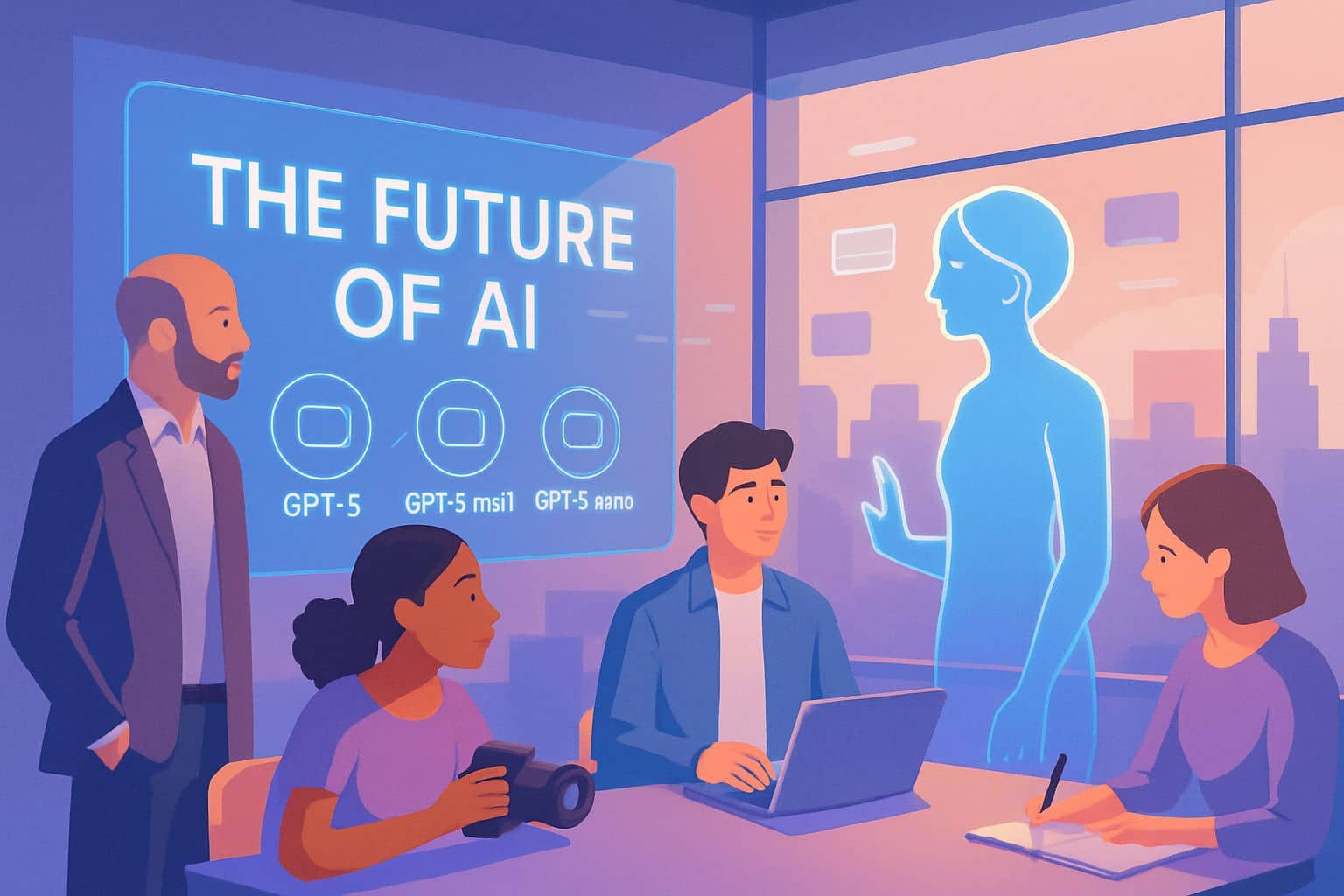
Not long ago, artificial intelligence felt like something out of a sci-fi movie—distant, experimental, and far from our daily lives. Today, that’s changed. From our phones to our workspaces, AI is not only present—it’s actively shaping the way we live, learn, and create.
And at the center of this transformation is the latest breakthrough from OpenAI: GPT-5, along with its versatile siblings GPT-5-Mini and GPT-5-Nano. If you’ve ever wished for a smarter collaborator, faster research assistant, or creative partner that adapts to your style, you’re about to explore all about GPT-5, GPT-5-Mini, and GPT-5-Nano.
Why GPT-5 Feels Like the Future Today
GPT-5 isn’t just an upgrade—it’s a leap forward. Whether you’re a business owner, student, or content creator, it works like a personal think tank, capable of switching between quick responses and deep, analytical reasoning.
Highlights that make it revolutionary:
- Adaptive Intelligence – Matches its depth to your task, saving time without cutting quality.
- Extended Memory – Handles projects and conversations that stretch over hours or even days.
- Multi-Personality Modes – Adjust tone and style for marketing, education, or casual chats.
All About GPT-5, GPT-5-Mini, and GPT-5-Nano
Each variant is tailored to specific needs:
- GPT-5 – Ideal for complex problem-solving, detailed content creation, and in-depth research.
- GPT-5-Mini – Faster, cost-efficient, and perfect for everyday tasks like emails or short-form writing.
- GPT-5-Nano – Lightweight and mobile-friendly for quick summaries, on-the-go assistance, and instant replies.
A graphic designer, for example, might use GPT-5 for a full campaign concept, GPT-5-Mini for drafting social media captions, and GPT-5-Nano to answer client messages while traveling.
Why You Should Care
The truth is, AI isn’t “coming” anymore—it’s in your inbox, your search results, your creative tools, and your meetings. Those who explore all about GPT-5, GPT-5-Mini, and GPT-5-Nano now will be the ones setting the pace in this new era.
ChatGPT-5: A New Chapter in the Evolution of AI
